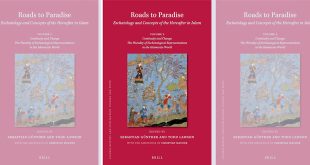This book reconstructs the development of an Islamic ideal in the form of Shi’ism It traces the Shi’a response to this ideal, from its origins among a group of the Prophet’s Companions until the Imamate of Ja’far as-Sadiq, by which time all the fundamental elements of Shi’ism had appeared.
The rise and development of Islam ham been the subject of numerous studies, both general and specialized, but a major question, that of the origins and early growth of Shi’a Islam, has received insufficient attention. So far, the approach to this subject has been largely through the works of heresiographers such as Baghdadi, Ibn Hazm, and Shahrastani; and the picture that has emerged has been that of a heresy founded on political and economic considerations. Indeed, valuable as the heresiographies are for an understanding of the problems involved, over-dependence on such polemical works can only be expected to result in such conclusions.
A much more reliable basis for research may be found in the historical texts, many of which preserve contemporary documents and fragments of older and more trustworthy accounts; but in their studies of Shi’a Islam, scholars have seldom turned to these more objective works. For many years, of course, these texts were accessible only in ancient manuscripts preserved in isolated collections scattered throughout the world. And within the works themselves, a passage relevant to our subject may often appear only after the perusal of an entire volume. Now, however, the great upsurge of scholarly interest in the Islamic world in both the East and the West has borne fruit, and the researcher has at his disposal modern critical editions of early sources and a plethora of invaluable reference aids.
In the light of the evidence now available, it is possible to undertake a critical reassessment of the origins and development of Shi’a Islam. In these pages, therefore, an attempt is made to trace out and reconstruct those earliest tendencies and ideas which gave Shi’a Islam its distinctive character. As these factors came to focus on the question of religious leadership, our discussion will largely concentrate on the Shi’i response to this problem, from its origins among a group of early Muslims until the Imamate of Ja’far as-Sadiq. By this time, all the fundamental elements of Shi’ism had appeared, and were being formulated into what would eventually become the Twelver system of doctrine and legal practice.
My aim has been to reconstruct and present the development of an Islamic ideal-that of a particular vision of religious leadership that first appeared after the Prophet’s death- based on the testimony of the historical sources. In this sense my work may be seen as completing itself with Chapter Eight, dealing with the movement of the Tawwabun. Chapter Nine deals with a problem within the Shi’a itself, and here certainly historical sources cannot be of much help. A solid historical foundation can be restored once again with Chapter Ten, which provides a background for the Imamate of Ja’far as -Sadiq. The last chapter does not, in fact, mark the culmination of the main theme of this work, but rather offers to the reader an assessment of a developed stage of a concept of religious leadership as it emerged from its rudimentary foundations.
About the Author
Syed Husain Mohammad Jafri, was the Chairman of “Islamic Pakistan Study Centre”, Aga Khan University of Karachi, Pakistan. He was Director of the “Pakistan Study Centre”, University of Karachi and holds two Ph.D. degrees.
Bibliographic Information
Title: The Origins and Early Development of Shi’a Islam
Author(s): Syed Husain Mohammad Jafri
Publisher: Oxford University Press
Length: 344 pages
ISBN: 978-0195793871
Pub. Date: April 4, 2002
 Ijtihad Network Being Wise and Faithful Muslim in the Contemporary World
Ijtihad Network Being Wise and Faithful Muslim in the Contemporary World

